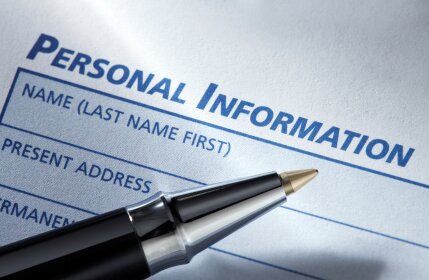Digital Identities: I Have One For Sale
by Heidi Bleau

The term digital identity is so suiting to who we really are online. Think about the accounts you log in to on a regular basis, the activities you perform each day, the way you communicate with others…most of our lives are digital. In a research study by Harris Polls (commissioned by RSA) on digital identities, the most popular online accounts for consumers are email, financial and banking, and entertainment/shopping. And on average, they access these online accounts from two different digital devices. But what does a digital identity really mean?
I like to think of myself as an average consumer/online user so let’s take a look at what I consider to be my digital identity – and perhaps make you think a little more about yours.
My financial identity. My financial identity is the one I treasure most. I mean seriously, if a hacker takes over my bank account and steals the money in it, I’d be lost. While my bank would ultimately reimburse me for fraudulent transactions, that could take days or weeks. How would I pay my bills, buy food or gas – and my daily iced coffee? But your financial identity goes well beyond just your bank account or credit cards. We attribute our financial identity just to those two areas because we use or access them almost every day. However, what about your stock account, 401k, payroll information? Or if you’re like me, you have a flexible spending or healthcare savings account you use to submit claims for childcare and medical expenses. As you can see, your financial identity extends well beyond just your bank account.
My personal identity. The two things I associate most with my personal identity are my personal email and social networking accounts. I hardly use personal email much anymore, but for most things you sign up for, you have to submit an email address. That’s probably the reason I maintain one as I can’t have my credit card statements or utility e-bills coming to my work email. Then we share our personal lives and moments with friends and family on social networking sites such as Facebook and Twitter. Most don’t realize the value these simple accounts hold to a criminal or hacker, but they do. For example, many online service providers notify you via email of changes on your account so if a hacker had access to your email, they could go in and delete the notifications so you wouldn’t be suspicious. Trust me, this happens all the time!
My entertainment/shopping identity. I do a majority of my holiday shopping online. The deals are usually better and frankly, I just can’t stand the holiday crowds. Then I have my kids who always seem to want the craziest or rarest things that you just can’t find in a regular store (One word to parents of little boys and you will understand: Minecraft). I also book a lot of activities online, purchase tickets to shows, and plan my travel among other things. So I probably have at least two dozen various entertainment/shopping online identities that I use or have used in the past (and that list keeps growing because of Groupon).
My online gaming identity. Well, this one could have gone under my entertainment identity, but I decided to make it its own category as a reminder to myself that I need to get a life and stop playing Candy Crush Saga. I’m on Level 270 – and there is no end in sight. Yes, this is my “You need a life” alert.
My online dating identity. Now this is the one for sale. While identity theft is hardly a laughing matter, I will gladly let any data thief steal this one. I never thought I could hate one of my own digital identities, but this one has got to go. Data thief steals online dating identity and handsome, emotionally available man steals my heart. Oops, I think I fell into daydream mode for a brief moment there.
Back to reality now. What made me ultimately realize the depth of my own digital identity occurred the other day when I went online to order my son’s pre-K pictures. I had to create an account with a username and password, and it made me ask myself, “How many times have I ever done this in my life for an ‘account’ I will probably only ever use once?” According to the Harris research, the average adult creates about two new online accounts every year, but I think it’s many more than that. We just don’t realize it because many are “one-time use” accounts – like the one I had to create to order my son’s school pictures. The problem is that we are likely using the same usernames, email address, and passwords that we use to log in to our everyday accounts like our online banking account. The reality and the risk: most small merchants don’t have the same security in place to protect your personal information that Amazon does. And with small merchants such a high value target for cybercrime, just one small breach could translate into your digital identity being compromised across multiple sites you access every day.
Be mindful every time you are asked to create an online account. If it is one that will be used only once or rarely, give yourself a very unique username and password. And then just for general online hygiene, also make sure you change the passwords to your major online accounts on a regular basis (about every 90 days).
____________________
Heidi Bleau writes about fraud perpetrated against enterprises and consumers. She is a Senior Marketing Programs Manager for RSA’s anti-fraud technologies and brings over five years of experience working within RSA’s Identity and Data Protection group.





